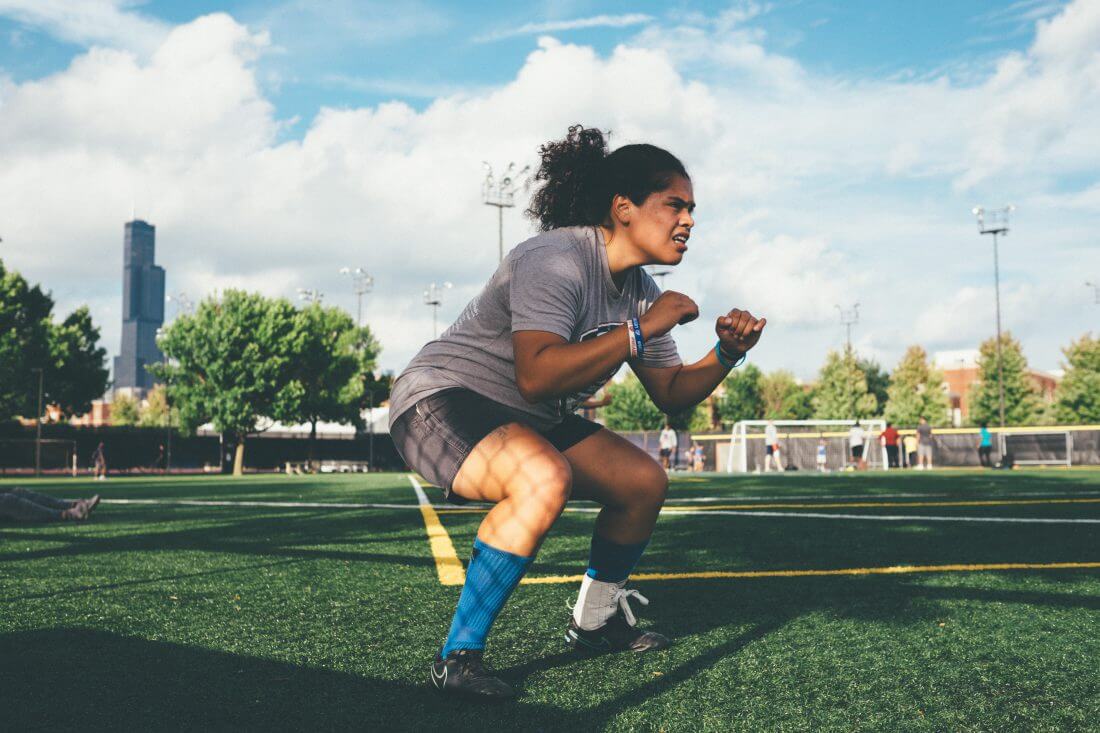
Muscle Cramping In the Heat
Muscle cramping is the bane of athletes exercising in the heat. It’s a painful condition that can range from annoying to disabling. That makes it important to know how to prevent one.
Experts urge players who are at risk to remain properly hydrated and eat a balanced diet that includes healthful salt-rich foods. Fad remedies, such as drinking a cocktail of spices and fruit, can delay proper care.
To help sort out the science and provide practical advice, we talked to E. Randy Eichner, M.D., professor emeritus of medicine at the University of Oklahoma Medical Center and former team physician for the Oklahoma Sooners football team. Eichner spent 14 years caring for Sooners football players in dauntingly hot conditions. And for three years he served as a physician for the Hawaii Ironman, one of the longest, most grueling, and hottest athletic competitions in the U.S.
Who gets heat cramps, and why?
“Heat cramps” are the most severe form of a condition doctors call exercise-associated muscle cramping (EAMC). They are marked by acute pain, stiffness and visible bulging or knotting of muscle among athletes training intensely amid growing dehydration on hot days. Cramping from fatigue alone tends to be milder, briefer and limited to one area of the body.
Football players in particular are at risk of EAMC while training in the summer, but heat cramping can also occur in tennis tournaments, distance running and cycling, triathlons, soccer and even beach volleyball. It can take the athlete out of the game, and cause performance-limiting soreness that lasts for days. Athletes of every stripe are encouraged to maintain proper conditioning and hydration while their bodies adjust to the heat over time.
“Severe football heat cramping comes from the trio of salt loss, fluid loss and muscle fatigue,” says Eichner. “The same applies to similar cramping in other sports in summer, especially when going hard in the heat.”
Eichner points toward “salty sweating” as the primary culprit.
Salty sweating
There are many types of cramps. Salty sweating does not cause calf cramps at night, “side-stitch” cramps in a long-distance runner, writer’s cramp or the potentially deadly oxygen-starved cramping of someone who has sickle trait and is exercising hard. But experience and research suggest that salty sweating triggers heat cramping in athletes.
Long ago, sailors mixed seawater with their drinking water to fend off heat cramping in the boiler room of old ships, and Hoover Dam steelworkers reversed heat cramps with intravenous saline.
Research shows that college football players who get heat cramps sweat more heavily than players who do not get heat cramps and lose twice as much sodium in their sweat. Average-sweating NFL players in summer training can lose the equivalent of 4-6 teaspoons of table salt a day and are advised to increase sodium intake during preseason.
Preventing heat cramps
Eichner and others urge heat cramp-prone athletes to consume extra salt in sodium–rich drinks and foods such as tomato juice, sports drinks, pretzels and beef jerky. Some teams provide salt tablets for players at risk of heat cramps, and others add about ¼ teaspoon of table salt to each pint of their drinking water.
While athletes work to maintain ideal sodium levels, there is also evidence that advises against a “too much, too soon” approach during hot summer training. As they slowly adjust to high-temperature workouts, athletes sweat earlier (at a lower body temperature) and heavier (at a higher sweat rate) than when they began heat training. And their sweat is less salty, explains Eichner. Their bodies adapt through a process called heat acclimatization.
But beware the first hot game of the season. They play much more intensely than on the final day of preseason training camp. They heat up faster, have a higher sweat rate and lose twice as much salt as they’re accustomed to.
“In short, the faster they sweat, the saltier they sweat,” says Eichner. “This increases the risk of heat or sweat cramping in the first game.”
Heat acclimatization, broadly speaking, describes the complex process of adapting and responding to the hot temperatures that can cause EAMC. The Korey Stringer Institute suggests making the adjustment over a period of 7 to 14 days, depending on the intensity of workouts and an athlete’s base level of fitness.
Coaches and athletic trainers should also allow a few days to ramp up activities that include wearing extra pads (or layers of clothing), while easing into full-contact drills and double-practice days while their players get used to training in high temperatures.
See Tips on Adjusting to the Heat
Be careful of certain fads and home remedies that claim to prevent EAMC in athletes, when there is little to no high-quality evidence that they work as intended. “Swigging a cocktail of spices and fruit for heat cramps in summer football or tennis is bad advice, if not risky business,” says Eichner.
Solutions while suffering heat cramps
Besides adding salt to the diet and consuming sports drinks at the first signs of EAMC, stretching, massaging and icing the muscle over its full-length can help reverse the effects of heat cramps.
For athletes who have a team physician, says Eichner, “two liters of intravenous saline can often reverse heat cramps fairly quickly and get the athlete back in the game.” However, treating heat cramping with plain water may be harmful and is not recommended.
The bottom line: For heat cramping in sports, seek salty solutions and stay properly hydrated.

